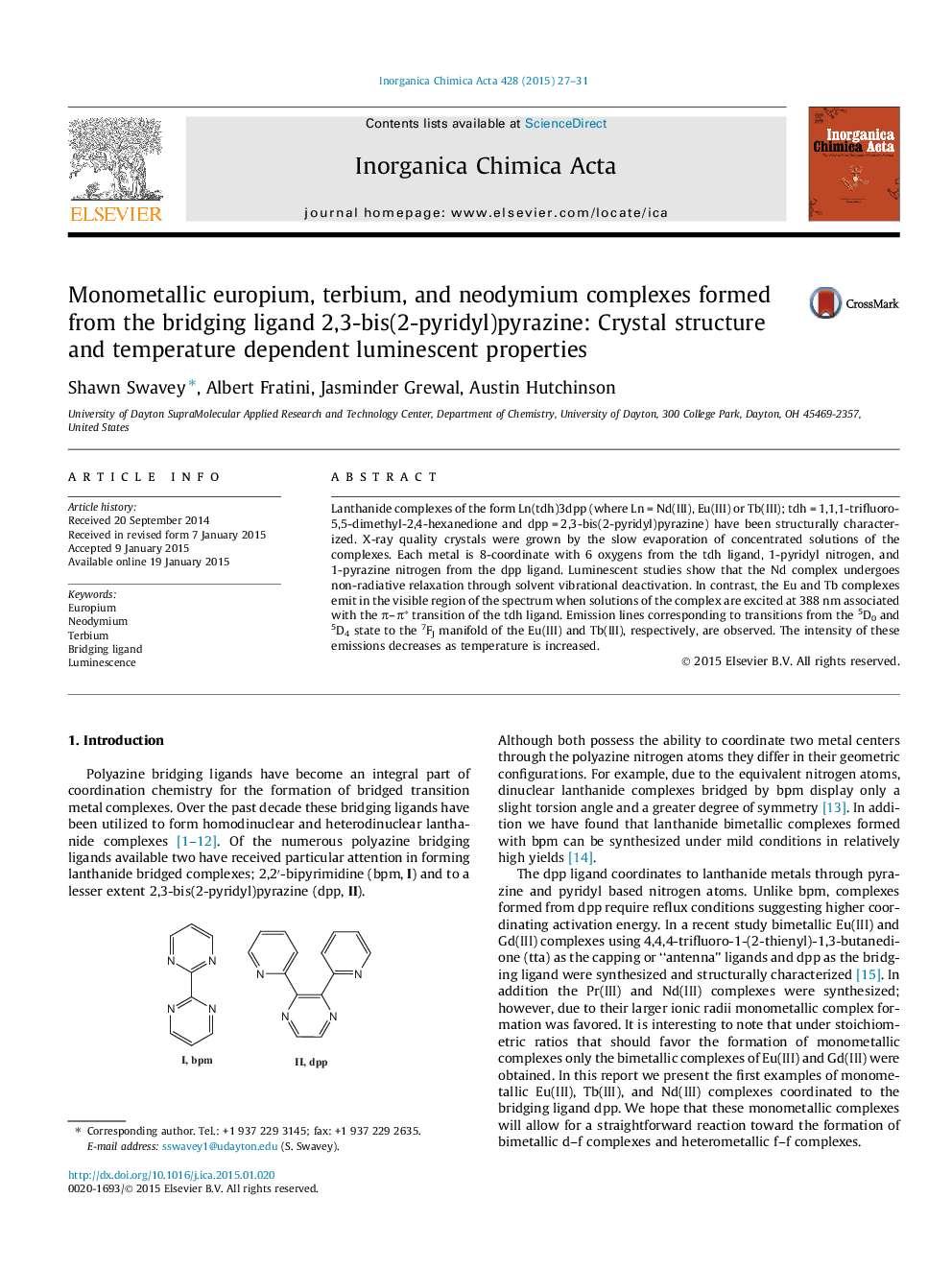| Article ID | Journal | Published Year | Pages | File Type |
|---|---|---|---|---|
| 1305500 | Inorganica Chimica Acta | 2015 | 5 Pages |
•Three new monometallic lanthanide complexes have been synthesized.•Each of the complexes has been structurally characterized.•Spectroscopic properties of the Eu(III) and Tb(III) complexes are reported.
Lanthanide complexes of the form Ln(tdh)3dpp (where Ln = Nd(III), Eu(III) or Tb(III); tdh = 1,1,1-trifluoro-5,5-dimethyl-2,4-hexanedione and dpp = 2,3-bis(2-pyridyl)pyrazine) have been structurally characterized. X-ray quality crystals were grown by the slow evaporation of concentrated solutions of the complexes. Each metal is 8-coordinate with 6 oxygens from the tdh ligand, 1-pyridyl nitrogen, and 1-pyrazine nitrogen from the dpp ligand. Luminescent studies show that the Nd complex undergoes non-radiative relaxation through solvent vibrational deactivation. In contrast, the Eu and Tb complexes emit in the visible region of the spectrum when solutions of the complex are excited at 388 nm associated with the π–π∗ transition of the tdh ligand. Emission lines corresponding to transitions from the 5D0 and 5D4 state to the 7FJ manifold of the Eu(III) and Tb(III), respectively, are observed. The intensity of these emissions decreases as temperature is increased.
Graphical abstractCombining the bridging ligand 2,3-bis(2-pyridyl)pyrazine (dpp) with a series of Ln(III) ions (Nd(III), Eu(III), Tb(III)) in a one to one ratio with three equivalents of the β-diketonate (1,1,1-trifluoro-5,5-dimethyl-2,4-hexanedione, tdh) results in high yields of monometallic complexes of the form Ln(tdh)3dpp.Figure optionsDownload full-size imageDownload as PowerPoint slide
